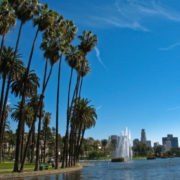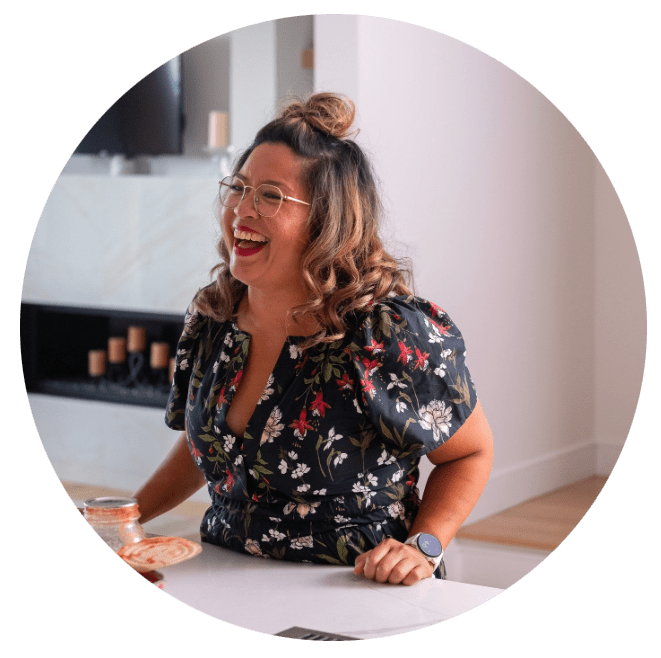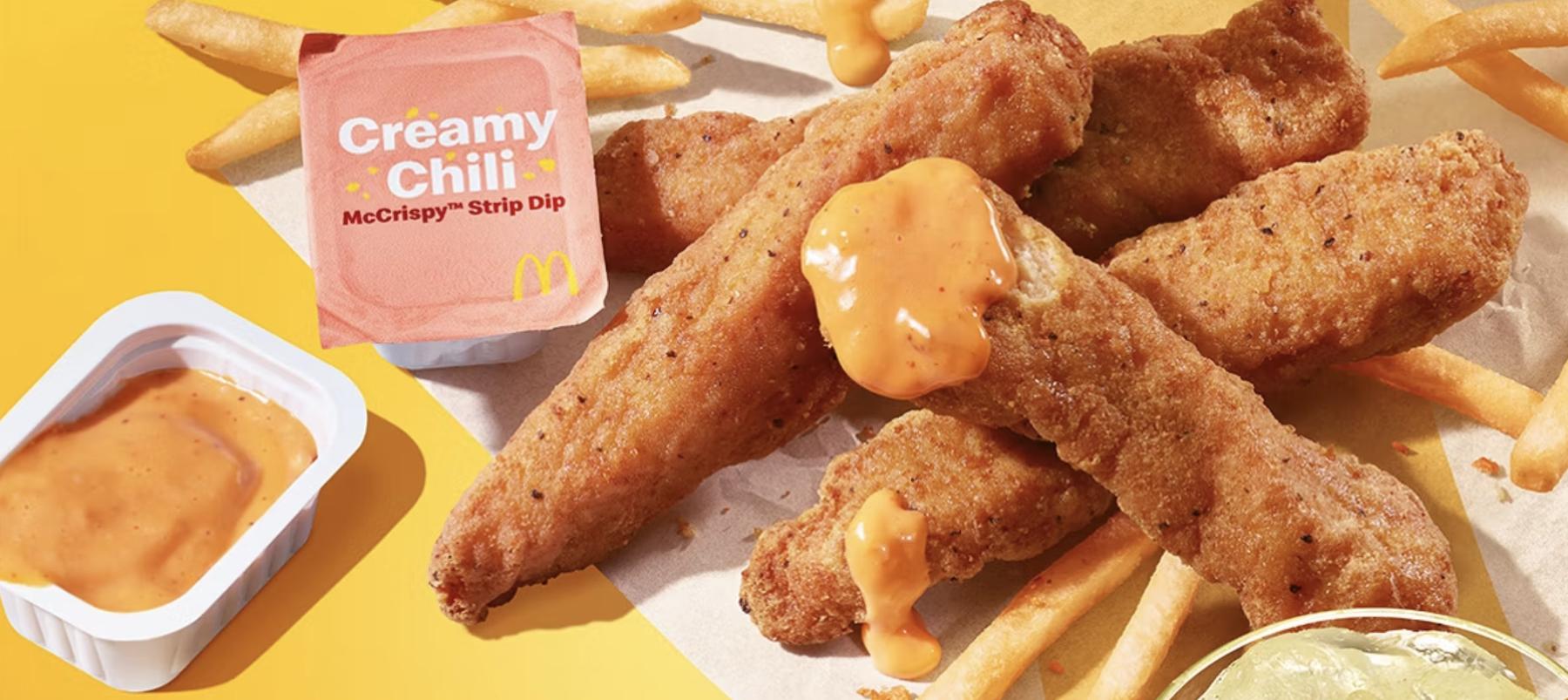When it comes to the word “aloha,” most people think of hula skirts, sunshine and tropical breezes, not food.
For Lanai Tabura, food is part of the aloha culture and spirit—“serving aloha one plate a time,” he says. “Aloha is the Hawaii way of bringing people together, especially through food. Food is the common denominator.”
The idea of aloha culture bringing people together through food is the basis behind Lanai’s TV show “Cooking Hawaiian Style,” airing Saturday mornings on the Lifestyle Network and DirecTV. The show is based on native influences and recipes from CookingHawaiianStyle.com, one of the top 10 aggregators for food recipes in the world, and gathers celebrity guest chefs with Hawaiian-style dishes, blending culinary with culture in a new and mainstream way.
“The demand for Hawaiian food, especially here and outside of Hawaii, is growing every day. People realize how important that is to our culture, that people outside love our food,” Lanai told the Asian Journal. “That’s the art of island cuisine. With the publicity of Cooking Hawaiian Style, we are not just creating a new path; we are making it even bigger.”
Aloha roots
Lanai Tabura grew up in the small island community of Lanai, the sixth-largest of the Hawaiian Islands known for its vast pineapple plantations. The eldest of four, Lanai (who is half-Filipino, a quarter Italian, Hawaiian, and Chinese) grew up having to take care of his siblings along with their working single mom and grandparents. In their small island home, the family was poor. With a lack of funds for grocery shopping or fast food, the family became creative in their cooking skills, making do with whatever they had, as well as taking advantage of the wild island they lived in. Lanai and his brothers went fishing, diving, and deer-hunting, gathering the skills necessary for cooking and hunting animals.
When asked about how cooking became not just a family hobby, but eventually turned into a business, Lanai credits his younger brother Adam. “At 17 years old, my brother Adam saved a man’s life. As a token of gratitude, this man gave Adam money for a full-ride scholarship to go to culinary school and take up cooking as a career, something Adam had always dreamed of doing. But right before he was about to graduate, he got into an accident that allowed him to save others but left him badly burned. After resting and taking time to heal, Adam eventually went back to school, and worked his way to finishing his cooking degree. And the rest is history.”
Producers of the Food Network Channel, who had heard of the Tabura brothers through local island fame and word-of-mouth, loved Adam’s story. After an extensive audition process, the brothers found themselves quitting their regular jobs to compete on the “Great Food Truck Race” TV show on Food Network in 2013. Together with their long-time friend Shawn Felipe, they traveled across the nation, overcoming culinary and sales challenges, and eventually won Season 4, $50,000 in cash, and their very own new food truck—the Aloha Plate Truck.
Since the big win, Aloha Plate Truck has become a global phenomenon, with its main truck operating all over Oahu, and future restaurants planning to open up in the Philippines and Japan. The truck, which serves Hawaiian-style fusion and traditional lunch plate meals, mainly caters at special events and is endorsed by Hawaii’s main tinned-meat “staple food,” Spam.
“It was a surreal experience,” Lanai shared. “Everywhere we went, on the show and on the island, the aloha spirit seemed to follow us. Everyone wants something from Hawaii. One of the most common comments we got from people was ‘mahalo for bringing us together’—that’s what aloha and our culture, the Aloha Plate Truck, is about.”
Lanai acclaims their win to the cooking “street smarts” he and his brother developed from their experience growing up on the islands, as well as the extensive network of support the Aloha Plate Truck had in each state. “We call it ‘coconut wireless’—it’s just the Hawaiian way,” he laughed.
“If you have never been to our islands, the curiosity to try our foods is always there. When you come to Hawaii, the first thing we do is cook for you or bring you to eat. That’s part of aloha.”
A generation of food
A few years ago, the creator of the website CookingHawaiianStyle.com, Frank Abraham, reached out to Lanai after seeing the success of Aloha Plate Truck business on the Food Network and in Oahu. Frank had known the Taburas through family friends, as well as through the TV/radio entertainment industry he and Lanai both regularly worked in. The two came together to create a web-interactive cooking show aimed at highlighting island cuisine.
“Cooking Hawaiian Style is a show about generations,” Lanai said. “We cook for a generation of people who came into Hawaii and influenced our meals. From the mid-1800s to today, waves of different Asian ethnicities; from the Chinese, Koreans, Japanese, and Filipinos, all came to these islands to settle and work on the plantation fields. Hawaii is a result of that coming together of cultures, and our show features the different kinds of food made on the plantations.”
As co-creators and executive producers of the show, Lanai and Frank are in charge of different things, from managing the website and social media networks, to filming in Honolulu on location twice a year. The show films 14 episodes in 2 days, featuring a line-up of special guests on each season, from Raymond Noh of Noh Foods to Top Chef producer Lee Anne Wong, “Famous Amos” Wally Amos, comedian Frank De Lima, and Hawaiian folk singer Anuhea. Lanai and Frank are in charge of promoting, booking special guests, and taking care of behind-the-scenes stuff, and Lanai also hosts on the show.
“We’re a mom-and-pop operation,” Lanai joked. “We should’ve named our company Two Flips Productions.”
“Cooking Hawaiian Style” was recently acquired by Lifestyle Network, who discovered the first few episodes on YouTube. “We realized that lots of Filipinos and Asian-Americans have a high interest in Hawaiian culture and food,” said Keesa Ocampo, a publicist and producer for Lifestyle Network. “We wanted to air a show that highlights just that—especially for Filipino culture, there is so much to be learned about the beauty of integration and assimilation, blending our culture with others, but still retaining our very distinct Filipino-ness.”
“One of the best and fastest ways that cultural education can travel is through food,” Ocampo continued. “Food really brings the community together, through sharing and over generations.”
Fusing island cuisine with traditional culture
Lanai is always inspired by his own roots on the show, often making Filipino-inspired dishes such as longanisa-style pinakbet, pork belly adobo with coconut milk, and adobo fried rice spam musubi. “It’s a twist from the typical Filipino generational style of cooking,” he said. “I grew up participating in different Filipino customs, eating Filipino food, but there was always a certain Hawaiian-ness about it too. I guess it’s an island thing, picking up other traditions so that it feels not ‘just Filipino’ or ‘just Hawaiian’.”
“We’re not making Hawaiian food; we’re making Hawaiian-style dishes, and it’s just like how we grew up eating,” his co-producer, Frank, chimed in. “It’s a little bit of everything.”
For his upcoming food columns, Lanai plans to integrate traditional Filipino dishes with Hawaii-style fusion food, just as they did in the old island plantations. “I was definitely influenced by my Filipino grandparents’ special recipes from Cebu and the Ilocano region, especially their way of improvising to make comfort food simply that we can share a meal every day.”
Lanai hopes to see Cooking Hawaiian Style grow with even more recipes, special guests, and a larger audience. The website already has an app for both Android and Apple, and published its first collectors’ item cookbook last year.
“Here’s what I say to aspiring chefs—if you lose the language, you lose the culture. If you lose the food, you also lose the culture. Just get in the kitchen, whether you’re a fast-food person or a parent wanting to teach their kids, and just try it. When we practice cooking together, we come together as a community and most importantly, we retain our culture.”
Check out all of the recipes on CookingHawaiianStyle.com, the Aloha Plate Truck page, and watch the TV show on Lifestyle Network (Saturdays at 10:00am), DirecTV Channel 2070, Oceanic Time Warner Channel 683, SoCal Time Warner Channel 1458, Bell Fibe Ch. 2156 in Ontario, Quebec, and on IPTV Channel 7 in Europe, Australia, and New Zealand.
(www.asianjournal.com)
(LA Midweek March 4, 2015 MDWK pg. 3)







